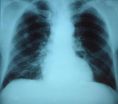(Press-News.org) CHAMPAIGN, Ill. — We humans have a fairly erratic sense of time. We tend to misjudge the duration of events, particularly when they are emotional in nature. Disturbingly negative experiences, for example, seem to last much longer than they actually do. And highly positive experiences seem to pass more quickly than negative ones.
Researchers say they have found a way to lessen these emotion-driven time distortions. Having a sense of control over events reduces the influence of emotions on time perception, the researchers report. This is true even for highly reactive emotional individuals and even if one's sense of control is an illusion.
The researchers describe their findings in a paper in Frontiers in Psychology.
Previous studies have found that highly arousing emotional experiences lead to the time distortions described above. Most people report that highly arousing positive images (erotic pictures, for example), viewed briefly on a computer monitor, flash by more quickly than disturbingly negative ones (of a dismembered body, for instance), even when the images are viewed for the same length of time. In contrast, low arousing positive or negative images (of a flower or mop, for example) tend to have the opposite effect: Most people report that mildly positive images seem to last longer than mildly negative ones do.
"We imagine that we're perfect at judging time, but we're not," said University of Illinois postdoctoral researcher Simona Buetti, who conducted the study with psychology professor Alejandro Lleras. "If you see a disgusting image, like a photo of a mutilated body, you will perceive this image lasting longer than if you see a picture of people on a roller coaster, or an erotic image. The major contribution of this study is to show that when you give participants a feeling of control, even if it's not perfect and even if it's totally illusory in an experiment, then you can make all these time distortions vanish."
Previous studies also exposed participants to positive and negative images to determine their effect on cognition, Lleras said.
"But in these previous studies, participants never had a sense of control over the experimental events. Images were just presented and participants simply reacted to them as they appeared," he said. "What is novel in our study is that participants are for the first time being given a sense that they can control the emotional events that they are witnessing in the lab."
In a series of experiments, the researchers asked participants to press keys on a keyboard to try to increase the frequency with which positive (or, in one experiment, negative) images appeared on a computer monitor. In reality, the participants had no control over the images; the researchers manipulated the ratio of positive to negative images to give them the impression that they were controlling – or failing to control – the emotional content of the images.
The researchers also tested a subset of participants who had a strong aversion to spiders. Buetti and Lleras reasoned that if control could alter the way people experienced emotional events, a particularly rigorous and useful test of this hypothesis would be to see if this held true in subjects who had very strong emotional reactions to images of spiders.
As in previous studies, when participants experienced low levels of control over experimental events, they tended to overestimate the amount of time they looked at highly arousing negative images (including photos of spiders) in relation to the amount of time they viewed highly arousing positive images. Buetti and Lleras also discovered that the more a person feared spiders, the more he or she tended to overestimate the duration of spider images.
"For spider-fearful individuals, it's as if time slows down when they are confronted with spiders," Lleras said.
But when the researchers induced a high level of perceived control in participants, the time distortions associated with the emotional content of the images went away.
"Even among spider-fearful participants, images of spiders no longer slowed time," said Lleras, who also is an affiliate of the Beckman Institute for Advanced Science and Technology.
"Across experiments, we found that the same images, the same horrible or positive images are actually treated differently if you give a sense of control to participants," Buetti said. "All of a sudden, they're looking at the world differently; they're reacting to the world differently."
Some time distortions returned, however, when in a final experiment participants were made to feel in control of negative events (the viewing of mostly negative images). When they pursued a goal that violated their basic instincts and desires for well-being, Lleras said, their sense of control "failed to inoculate them from the time distortions associated with viewing very disturbing negative images."
The new findings have implications for future studies, the researchers said.
"We now know that experiments on emotion processing can lead to dramatically different outcomes depending on whether participants are offered a sense of control over experimental events or not," Buetti said.
INFORMATION:
Editor's notes: To reach Simona Buetti, email buetti@illinois.edu. To reach Alejandro Lleras, email alleras@illinois.edu.
The paper, "Perceiving Control Over Aversive and Fearful Events Can
Alter How We Experience Those Events: An Investigation of Time
Perception in Spider-Fearful Individuals," is available online or from the U. of I. News Bureau.
A sense of control, even if illusory, eliminates emotion-driven distortions of time
2012-10-25
ELSE PRESS RELEASES FROM THIS DATE:
FFR-guided PCI shows cost-effectiveness when compared to medical therapy for stable CAD
2012-10-25
MIAMI, FL – OCTOBER 24, 2012 –A strategy of up-front percutaneous coronary intervention (PCI) for lesions confirmed to be obstructive by fractional flow reserve (FFR) was shown to be cost-effective in terms of quality-adjusted life years when compared to medical therapy alone. Results of the Cost-Effectiveness sub study of the FAME 2 trial were presented today at the 24th annual Transcatheter Cardiovascular Therapeutics (TCT) scientific symposium. Sponsored by the Cardiovascular Research Foundation (CRF), TCT is the world's premier educational meeting specializing in interventional ...
Study confirms benefits of transcatheter aortic valve replacement over 3 years
2012-10-25
MIAMI, FL – OCTOBER 24, 2012 – A study found that transcatheter aortic valve replacement (TAVR) yielded lower mortality rates after three years compared with medical therapy in patients deemed to be ineligible for conventional aortic valve surgery. Results of the PARTNER Cohort B trial were presented today at the 24th annual Transcatheter Cardiovascular Therapeutics (TCT) scientific symposium. Sponsored by the Cardiovascular Research Foundation (CRF), TCT is the world's premier educational meeting specializing in interventional cardiovascular medicine.
TAVR is the recommended ...
Results of the ISAR-LEFT MAIN 2 trial presented at TCT 2012
2012-10-25
MIAMI, FL – OCTOBER 24, 2012 – A study found that second-generation drug-eluting stents are safe and effective in the treatment of left main coronary artery lesions. Results of the ISAR-LEFT MAIN 2 trial were presented at the 24th annual Transcatheter Cardiovascular Therapeutics (TCT) scientific symposium. Sponsored by the Cardiovascular Research Foundation (CRF), TCT is the world's premier educational meeting specializing in interventional cardiovascular medicine.
Patients undergoing invasive treatment of unprotected left main coronary artery (uLMCA) lesions are often ...
Scientists target bacterial transfer of resistance genes
2012-10-25
CHAMPAIGN, Ill. — The bacterium Streptococcus pneumoniae – which can cause pneumonia, meningitis, bacteremia and sepsis – likes to share its antibiotic-defeating weaponry with its neighbors. Individual cells can pass resistance genes to one another through a process called horizontal gene transfer, or by "transformation," the uptake of DNA from the environment.
Now researchers report that they can interrupt the cascade of cellular events that allows S. pneumoniae to swap or suck up DNA. The new findings, reported in the journal PLoS ONE, advance the effort to develop ...
Research findings breathe new life into lung disease
2012-10-25
TORONTO, Oct. 24, 2012--It turns out the muscle cells on the outside of blood vessels have been wrongly accused for instigating lung disease. New research shows that while these muscle cells are responsible for constricting or dilating the blood vessels, they are not responsible for sensing the amount of oxygen that gets to the lungs. That message comes from the endothelial cells – special cells that line the blood vessels – along a "signalling pathway."
When a person is low on oxygen, blood vessels throughout the body expand to improve the delivery of this vital molecule ...
Is obesity irreversible? Timing is key in weight loss, U-M research shows
2012-10-25
ANN ARBOR, Mich. — Joint research between the University of Michigan and the Argentina-based National Council of Science and Technology (CONICET) has shed light on one of the most frustrating mysteries of weight loss – why the weight inevitably comes back.
A novel animal model showed that the longer mice remained overweight, the more "irreversible" obesity became, according to the new study that appeared online ahead of print Oct.24 in the Journal of Clinical Investigation.
Over time, the static, obese state of the mice reset the "normal," body weight set point to ...
Mesh-covered stent helps restoration of blood flow in heart attack patients undergoing PCI
2012-10-25
MIAMI, FL – OCTOBER 24, 2012 – A clinical trial found that the use of a next generation, micronet, mesh-covered stent demonstrated improved restoration of blood flow to heart tissue, compared to the use of either bare-metal or drug-eluting stents in heart attack patients undergoing angioplasty. Results of the MASTER trial were presented today at the 24th annual Transcatheter Cardiovascular Therapeutics (TCT) scientific symposium and will appear in the November 6th issue of the Journal of the American College of Cardiology. Sponsored by the Cardiovascular Research Foundation, ...
Knee replacement not an 'easy solution' for obese patients
2012-10-25
ROSEMONT, IL–Obese patients have a greater risk of complications following total knee replacement surgery, including post-surgical infections, according to a new literature review recently published in the Journal of Bone and Joint Surgery (JBJS). Because of complications, obese patients are more likely to require follow-up surgery (revision).
Obesity is reaching epidemic proportions, particularly in the United States, and is a well-documented risk factor for the development of osteoarthritis. Arthritis is initially treated nonsurgically, but total joint replacement often ...
Ghost busting
2012-10-25
The fourth installment of the Paranormal Activity films topped the box office last week. Television channel SyFy's hit show Ghost Hunters scares up big ratings, and has spawned copycat series on networks ranging from Biography to Animal Planet.
The omnipresence of paranormal entertainment piqued the interest of Paul Brewer, professor of communication, who wondered what makes viewers believe—or disbelieve— what they see on the screen.
His resulting study, recently published in the journal Science Communication, examines the influence of media messages about paranormal ...
Measuring Table-Top Accelerators’ State-of-the-Art Beams
2012-10-25
Part Two: Slicing through the electron beam
Wim Leemans of Berkeley Lab's Accelerator and Fusion Research Division heads LOASIS, the Laser and Optical Accelerator Systems Integrated Studies, an oasis indeed for students pursuing graduate studies in laser plasma acceleration (LPA). Among the most promising applications of future table-top accelerators are new kinds of light sources, in which their electron beams power free electron lasers.
"If our LPA electron bunches had good enough quality for free electron lasers – and were really only femtoseconds long – we should ...




